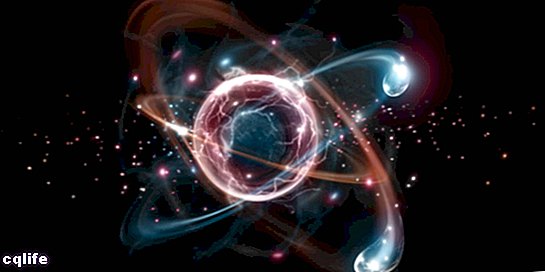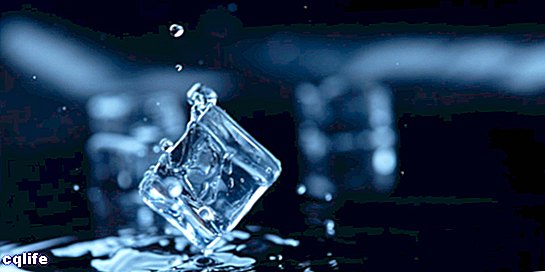- What is matter?
- Chemical properties of matter
- Physical properties of matter
- Classification of matter
- Examples of matter
We explain what matter is and what its chemical and physical properties are. Also, how it is classified and some examples of matter.

What is matter?
We call matter to everything that occupies a certain place in the universe or space, has a certain amount of Energy and is subject to interactions and changes in the weather, which can be measured with an instrument of measurement.
From a chemical point of view, matter is the set of constituent elements of the reality perceptible, that is, what constitutes the substances around us and ourselves. The chemistry is the science which deals with studying the composition and transformation of matter.
We use the term matter as a synonym for substance, that is, of the thing that objects are made of, and we understand it scientifically as something other than forces or energies, which are more related to dynamics that interact with objects.
Matter is found everywhere and in any physical state (solid, liquid, gaseous, plasma). There is matter in the air that you breathe, as well as in a glass of Water. Everything we see, feel and touch is matter, and that is why it is fundamental for the development of the life at planet.
As far as we know, chemically matter is made up of microscopic particles, which we call atoms. Atoms are the fundamental units of matter. Each atom has the properties of chemical element to which it belongs. There are up to now 118 chemical elements that are located, ordered and classified in the Periodic table of the elements.
On the other hand, atoms are different from each other, depending on the quantity or distribution of their subatomic particles, which are always of three types: electrons (negative charge), protons (positive charge) and neutrons (neutral charge). The protons and neutrons are in the atomic nucleus, and the electrons around it.
The reactions between the forms of matter or different substances are known as chemical reactions.
Chemical properties of matter

Every form of matter reacts in the presence of other substances, according to certain constitutive properties of its atoms or molecules, which allows the result of said reactions to be substances different from the initial ones (more complex or simpler).
Among the main chemical properties of matter are:
- pH. The corrosiveness of acids and the causticity of bases It has to do with the pH of the matter, that is, its level of acidity or alkalinity, its ability to donate or receive electrons when it is in contact with certain materials, such as metals or like the organic material. These reactions are usually exothermic, that is, they generate heat. On the other hand, pH measures the amount of H3O + or OH– ions in a substance or a dissolution.
- Reactivity. According to its atomic constitution, matter can be more or less reactive, that is, more or less prone to combine with other substances. In the case of the more reactive forms, such as the metals cesium (Ce) and francium (Fr), it is rare to see them in pure forms, they are almost always part of compounds with other elements. The calls Noble gases or inert gases, on the other hand, are forms of matter with very low reactivity, which hardly undergo reaction with any other substance.
- Inflammability. Some substances can ignite, that is, generate an explosion that releases heat and produces flames, in the presence of a heat source or in a reaction with other substances. This material is called flammable (for example, gasoline).
- Oxidation. It is the loss of electrons from an atom or ion when it reacts against a certain compound.
- Reduction. It is the gain of electrons of an atom or ion when it reacts against a certain compound.
Physical properties of matter

In the solid state the particles are very close together.
Matter also has physical properties, that is, properties derived from changes in its form of appearance that are linked to the action of other external forces. The physical properties are not related to the chemical composition of the substances.
Among the main physical properties of matter are:
- Temperature. It is the degree of heat that matter presents at a time, which is generally radiated towards the environment when a substance has a higher temperature than its surroundings. Temperature is the degree of Kinetic energy presented by the particles of a material.
- State of aggregation. Matter can appear in three "states" or molecular structures determined by its temperature or Pressure to which it is subjected. These three states are: solid (closely packed particles, low kinetic energy), liquid (particles less together, enough kinetic energy for matter to flow, without separating completely) and gaseous (very distant particles, high kinetic energy).
- Conductivity or conductivity. There are two forms of conductivity: thermal (heat) and the electric (electromagnetism), and in both cases it is the capacity of materials to allow the transit of energy through their particles. Materials with high conductivity are known as conductors, those with low conductivity as semiconductors and those with null conductivity such as insulators.
- Melting point. It is the temperature at which a solid turns into a liquid at a pressure of 1 atm.
- Boiling point. It is the temperature at which the pressure of steam of a liquid equals the pressure around the liquid. At this point the liquid transforms into vapor. When the vapor pressure of the liquid equals atmospheric pressure it is called "normal boiling point".
Classification of matter

There are many ways and criteria to classify matter. From a general point of view, we can list the main ones as follows:
- Living matter. Conforms to living beings, while they are alive.
- Inanimate matter. It composes inert, lifeless, or dead objects.
- Organic material. Made up mainly of carbon and hydrogen atoms, and is generally linked to the chemistry of life.
- Inorganic material. It is not organic and does not necessarily have to do with life but with spontaneous or non-spontaneous chemical reactions.
- Simple matter. It is composed of atoms of a few different types, that is, it is closer to purity.
- Composite matter. It is made up of numerous elements of various types, reaching high levels of complexity.
Examples of matter
Virtually all objects in the universe are a good example of matter, as long as they are made up of atoms and have determinable, discernible and measurable physical-chemical properties.
Stones, metals, the air we breathe, wood, our bodies, the water we drink, all the objects we use every day are perfect examples of matter. There are even recent theories of quantum physics that propose that the vacuum, understood until now as the absence of matter, would also be "full" of some type of particles, called "Higgs bosons".
